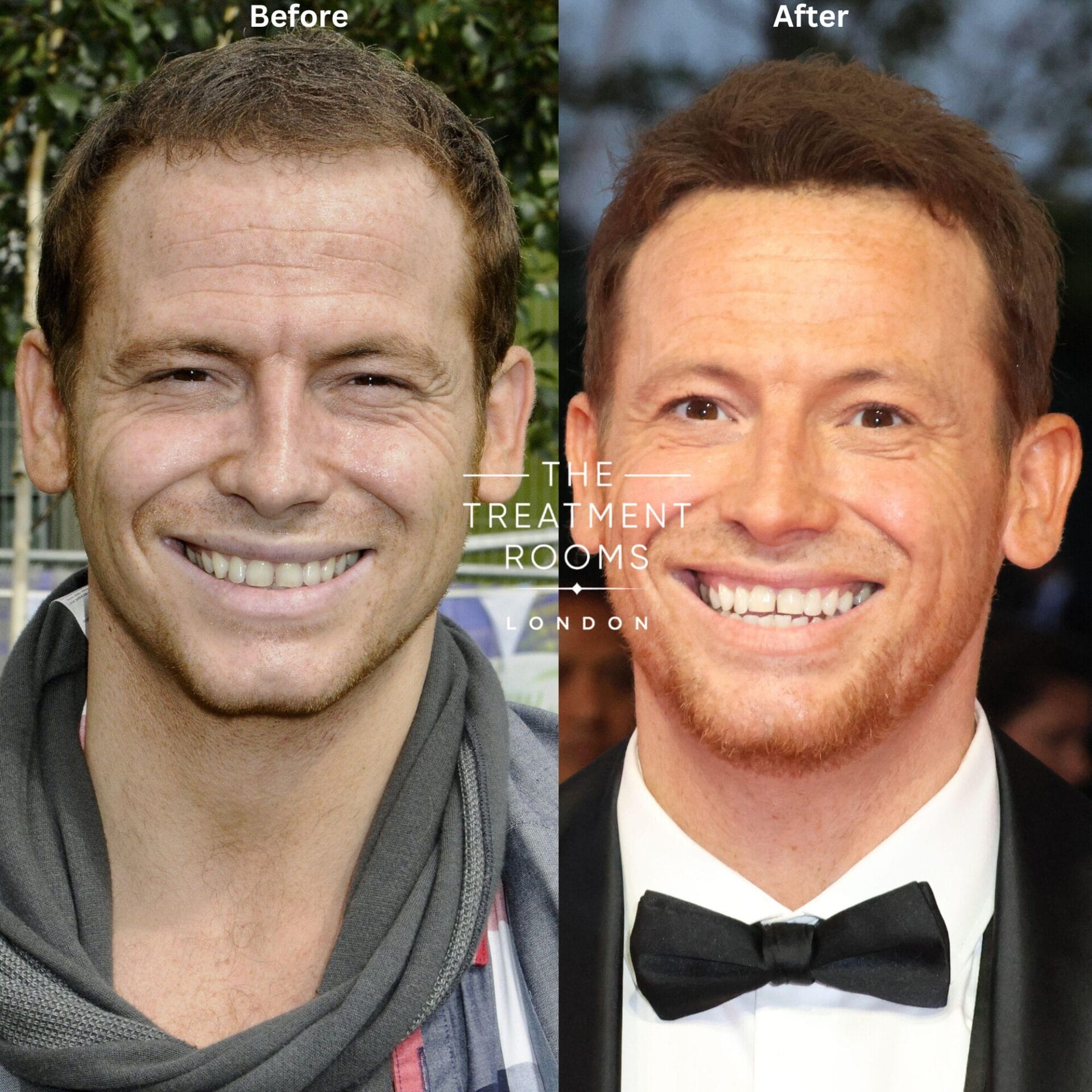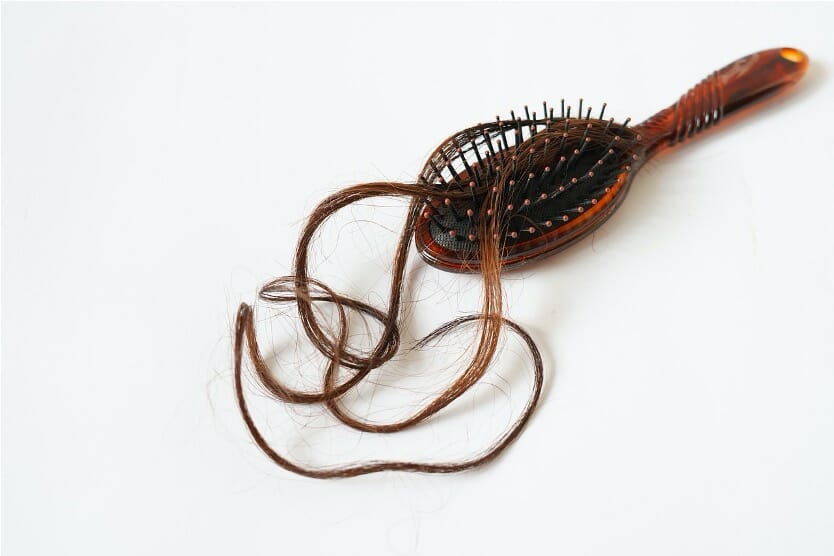Balding is a common concern that affects individuals throughout various stages of life.
While often associated with older adults, experiencing hair loss in your 30s can be particularly distressing, leading to issues with self-confidence, self-perception and emotional wellbeing.1
However, balding early in life is widespread and can happen for several reasons, including stress, diet, genetics and even poor hair management.2
In this article, we discuss some of the main reasons, highlighting everything you need to know about balding in your 30s and the available treatment options.
Understanding hair loss in your 30s
Balding or hair thinning can happen at any age. For example, a recent study found that people in their 20s in China are going bald sooner than any previous generation.3
The reasons behind this includes:2
- Hormonal changes
- Stress
- Unhealthy hair habits (e.g. bleaching hair)
- Genetic predisposition to conditions like androgenic alopeciaMedical conditions like thyroid issues or lupus
- Poor diet or lifestyle (such as smoking, excessive alcohol intake, lack of exercise)
Balding in your 30s is also much more prevalent than you might think – an estimated 40% of men see noticeable hair loss by age 35, while 40% of women have visible hair loss by 40.4
The main thing is to notice that your hair is thinning, as it is not always immediately apparent. During the China-based study, 25% of the 4,000 participants said they did not notice they were balding until a friend or family member pointed it out.3
The earlier you notice your hair is thinning, the easier the issue will be to treat.
Recognising the signs and symptoms of hair loss in your 30s
Recognising the early signs of balding is crucial for early intervention, so you must look regularly for any changes in your hairline, texture and thickness. For example, some of the essential things to look for might include:
- Noticeable thinning – bald spots and thinning of the hair shaft (the visible part of the hair that sticks out of the skin) could indicate hair loss.
- Reduced hair density – especially noticeable in specific areas of the scalp.
- Receding hairline – the hairline may gradually move backwards to form a distinct M shape.
- Increased hair shedding – for example, finding excessive hair on your pillow, in the shower or on your hairbrush.
- Widening hair parting – a widening gap or a visible scalp when you part your hair could indicate hair loss.
- Itching or scalp tenderness – may be felt in specific scalp areas with thinning or hair loss.
- Increased sensitivity to styling – for instance, if your hair becomes more prone to breakage or falls out when trying to style it.
- Slower hair growth – if you notice your hair takes longer to regrow after a haircut, this could be a sign of hair loss.
While seeing any of these signs can be concerning, especially when you’re young, it’s vital to remember that plenty of options are available to resolve the issue.
Prevention and lifestyle changes
Experiencing hair loss at a young age may be distressing, but feeling stressed can worsen your hair thinning, creating a catch-22.
Remaining calm and putting preventative measures in place will help limit the extent of your hair loss. Consider a broad range of lifestyle modifications, such as:
- Keep healthy – hair quality often reflects your lifestyle. Research has shown that adopting a healthy lifestyle with regular exercise and sufficient sleep could help improve your hair health by reducing loss.5
- Maintain a proper diet – consume a diet rich in vitamins D, C and E, omega-3. Zinc and iron can support your hair health. Research also shows that Biotin, also known as vitamin B7, can help increase the thickness of hair follicles.6
- Manage your stress – studies show that stress can impact the hair growth cycle, moving hairs out of the growth phase (anagen) prematurely.7 Therefore, managing stress through mindfulness techniques, like meditation, counselling or exercise, could reduce hair loss.1
- Reconsider your hair styling routine – heated curlers, straighteners or restrictive hairstyles like tight ponytails or extensions could damage your hair. Instead, opt for a hairstyle that compliments your current hair condition to reduce shedding.
- Connect with support groups and communities – connecting with others facing similar challenges can provide emotional support and practical advice to help you understand your hair loss and learn how to minimise it.
While these preventative measures can reduce hair loss in your 30s, factors like genetics and certain medical conditions can make balding inevitable. Therefore, consulting a haircare specialist is the best way to seek tailored advice about your circumstances.
Treatment options
Changing your lifestyle can significantly affect your self-esteem and wellbeing, but you may require medical interventions depending on the extent of your hair loss.
Fortunately, several treatment options are available to combat hair loss, including topical treatments and surgeries. Some of the main options typically include:
- Finasteride – only for use in men; this prescription medicine is taken orally and works by blocking the action of an enzyme called 5-alpha-reductase. The medicine helps prevent further hair loss and encourages regrowth.8
- Minoxidil – a topical medication that encourages hair regrowth and thickening.8,9 It is rarely associated with various side effects.
- FUE hair transplant – this procedure can be offered to men and women and involves extracting individual hair follicles from the back and sides of your head before transplanting them to areas of the scalp with thinning or balding.
Finding the correct type of treatment for your hair loss will vary depending on several factors, including your age, gender, medications, and your type of hair loss. So, it’s crucial to speak to a professional before starting any kind of hair loss treatment.
Combat balding at The Treatment Rooms London
We understand that going through hair loss can be an incredibly sensitive and difficult time. But it’s important to remember two things – first, you’re not alone. And second, practical solutions exist.
At The Treatment Rooms London, we have helped hundreds of patients renew their hairline, reduce hair loss and restore their confidence.
If you’re in your 30s and would like further advice on combating your balding, book a consultation with us; we’d be more than happy to help.
Sources
- Dhami, L. (2021) Psychology of Hair Loss Patients and Importance of Counseling. Indian J Plast Surg. 54(4): 411 – 415. Available at: https://www.ncbi.nlm.nih.gov/pmc/articles/PMC8719979/ [Accessed 6 December 2023]
- Patel, N. & Sanghvi, S. (2023) 10 most common causes of hair loss. LloydsPharmacy. Available at: https://onlinedoctor.lloydspharmacy.com/uk/hair-loss-advice/hair-loss-causes [Accessed 6 December 2023]
- Citroner, G. (2018) Why Millennials Are Losing Their Hair Earlier. Healthline. Available at: https://www.healthline.com/health-news/why-millennials-losing-hair-earlier [Accessed 6 December 2023]
- Statistic Brain Research Institute (2018) Hair Loss and Baldness Statistics. Available at: https://www.statisticbrain.com/hair-loss-statistics/ [Accessed 6 December 2023]
- Jiang, Y., Shi, Q., Huang, Y. (2021) Relationship between the exercise and severity of androgenic alopecia. Zhong Nan Da Xue Xue Bao Yi Xue Ban. 46(7): 725 – 730. Available at: https://pubmed.ncbi.nlm.nih.gov/34382589/ [Accessed 6 December 2023]
- Patel, D., Swink, S. & Castelo-Soccio, L. (2017) A Review of the Use of Biotin for Hair Loss. Skin Appendage Disord. 3(3): 166 – 169. Available at: https://pubmed.ncbi.nlm.nih.gov/28879195/ [Accessed 7 December 2023]
- Arck, P., Handjiski, B., Peters, E., et al. (2003) Stress inhibits hair growth in mice by induction of premature catagen development and deleterious perifollicular inflammatory events via neuropeptide substance P-dependent pathways. Am J Pathol. 162(3): 803 – 814. Available at: https://pubmed.ncbi.nlm.nih.gov/12598315/ Accessed 7 December 2023]
- McMillen, M. & Gardner, S. (2023) Treatments for Thinning Hair: Do They Work? WebMD. Available at: https://www.webmd.com/beauty/thinning-hair [Accessed 7 December 2023]
- Suchonwanit, P., Thammarucha, S. & Leerunyakul, K. (2019) Minoxidil and its use in hair disorders: a review. Drug Des Devel Ther. 13: 2777 – 2786. Available at: https://www.ncbi.nlm.nih.gov/pmc/articles/PMC6691938/ [Accessed 7 December 2023]
Share:
Authored by
Reviewed by
Book a Consultation
Related Blogs
Jack P Shepherd Hair Transplant: Before, After, and His New Hairline
March 12, 2025
Jack P. Shepherd is best known for portraying David Platt in Coronation Street for over two decades….
Jimmy Carr Hair Transplant: Before, After, and His New Hairline
March 12, 2025
As one of the most popular British comedians the complete change in Jimmy Carr’s hairline was a…
Folic Acid and Hair Loss
March 12, 2025
Quick Summary Hair loss is a widespread concern that affects millions of people globally. While genetics, hormonal…
Andros Townsend Transplant: Before, After, and His New Hairline
March 11, 2025
He’s best known for his days spent kicking a ball around, but Premier League footballer Andros Townsend…
Harry Kane Hair and Hairline
March 11, 2025
Harry Kane has suffered from a common condition of hair loss called male pattern baldness. This has…
Joe Swash Transplant: Before, After, and His New Hairline
March 11, 2025
Former ‘EastEnders’ actor and ‘I’m a Celebrity’ contestant Joe Swash has spoken very candidly about receiving multiple…
Guide To Finasteride For Hair Loss
March 4, 2025
One of the main effective medications in treating hair loss is Finasteride, which is often prescribed to…
When Can You Safely Wear a Beanie After a Hair Transplant?
March 1, 2025
Quick Summary Cap Recommendations: Light, breathable caps like snapbacks or trucker’s caps are advisable if you need…
Dutasteride and Hair Loss
February 23, 2025
Dutasteride is a medication that can be prescribed to men suffering from male pattern hair loss (androgenic…











